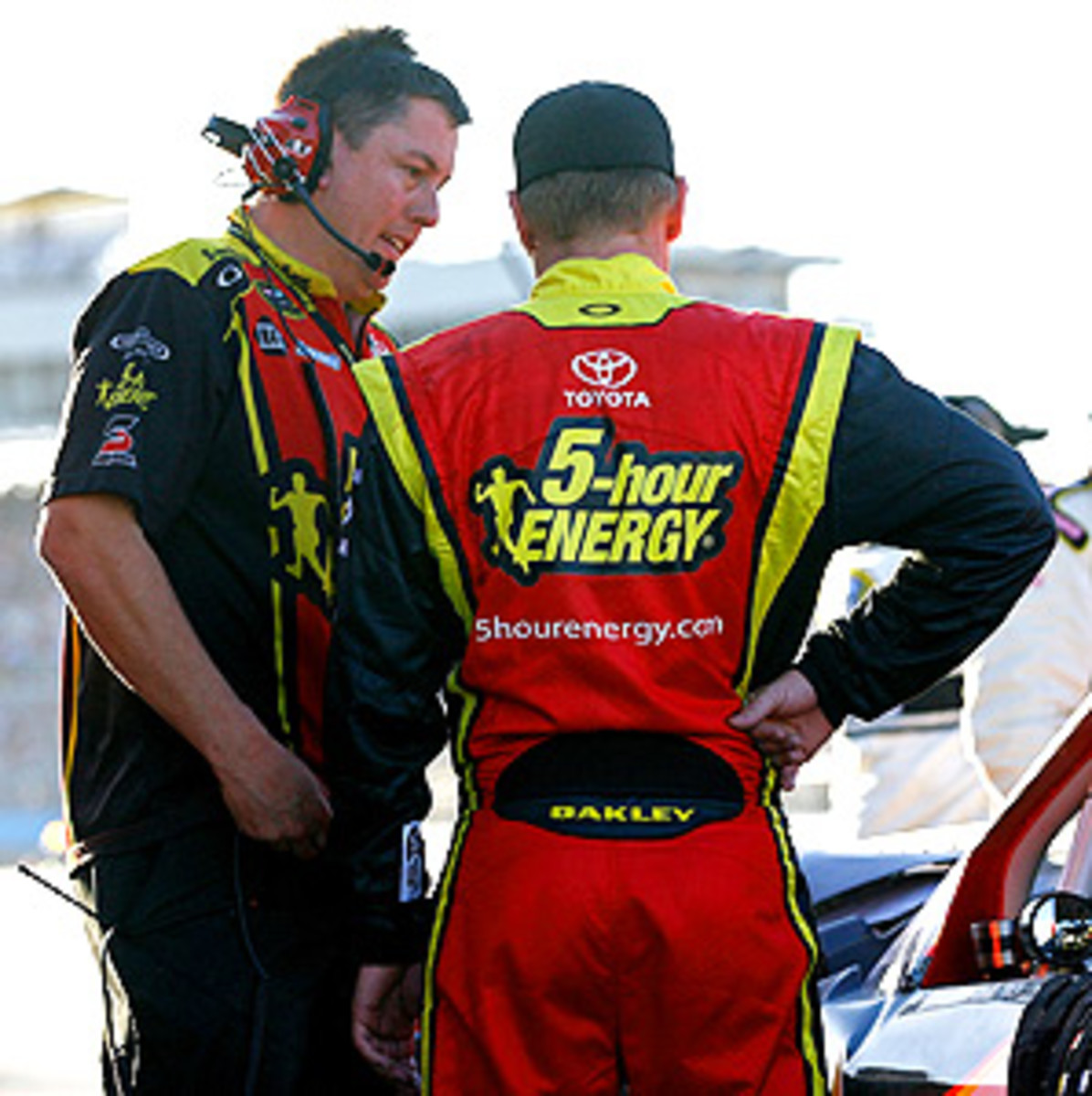
NASCAR downplayed Bowyer's and Gordon's crash to attract attention
The images from Phoenix were everywhere: on all the national networks, all the major papers, all the top websites -- including those that don't normally cover NASCAR. After Jeff Gordon intentionally wrecked Clint Bowyer late on Sunday afternoon at Phoenix International Raceway, it set off a wild brawl in the garage, as the two pit crews shoved each other to the ground. Seeing the melee on a video screen, Bowyer hopped out of his crumpled car and sprinted toward Gordon's hauler, hoping to make a mess of Gordon's face.
As all this was unfolding, I received dozens of texts and tweets all saying basically the same thing: Finally, I'm paying attention to NASCAR! And this is goes to the very core of the dilemma that faced the NASCAR brass on Monday when deciding to mete out punishment: Would they tacitly encourage this kind of boorish behavior (which makes for excellent, riveting television) or would they make it clear that the governing body has no tolerance for a driver using his car as a lethal weapon. NASCAR opted for the former, choosing to only fine Gordon $100K and dock him 25 points. This means Gordon will be on the track this weekend at Miami-Homestead Speedway where one would expect that he'll receive another form of punishment from one Clint Bowyer.
"The sport was made on fights," said Kevin Harvick, who won the race at Phoenix. "We should have more fights. I like fights. They're not always fun to be in. Sometimes you're on the wrong end. But fights are what made NASCAR what it is."
Harvick is right. Back in 1979, in the first national telecast of a 500-mile NASCAR race on CBS, leaders Cale Yarborough and Donnie Allison slammed into each other as they were charging toward the checkered flag on the final lap of the Daytona 500. After their cars came to a stop on the infield grass, the two began to argue. Then Bobby Allison, who was a lap down, stopped and a fight broke out. The next day NASCAR appeared on the front page of the New York Times sports section -- a first. You could argue that this was the moment that NASCAR grew from a regional, Southern-based sport to a national sport. So in this sense, fighting has been very, very good to NASCAR. (The TV ratings were down for the Phoenix race, but because the Gordon vs. Bowyer incident took place so late in the event, you could argue that the ratings were already a baked cake by the time the brawl occurred.)
I may be in the minority -- and certainly my colleague Dustin Long doesn't agree with this, as he wrote earlier this week -- but I think NASCAR made the right call on Gordon. NASCAR officials have said in the past that they want drivers to police themselves, spelling it out in their "Have at it, boys" policy back in 2010. NASCAR chairman Brian France has said there are limits to this policy, noting in the past that "if drivers put each other in danger" that NASCAR will step in. But I think it's time for NASCAR to revisit this -- and apparently NASCAR did.
All wrecks are potentially hazardous. This is a dangerous sport, which all the drivers are well aware of. But NASCAR should let the drivers -- in all cases, no matter the severity of the accident or the clear premeditation of the act -- regulate themselves. The best drivers avoid acts of retaliation, because it ultimately will come back to haunt them and cause a terrible points day. One of Jimmie Johnson's keys to winning five of the last six Cup titles has been his ability to avoid making enemies on the track. By my count he's never been intentionally dumped into the wall in any of his championship years. Why? Because Johnson is genuinely liked by his peers; when he makes a mistake, he's quick to apologize.
Gordon, on the other hand, has had several run-ins with different drivers over the last few years. He and Bowyer tangled at Martinsville (Va.) Speedway earlier this season and obviously Gordon hadn't that let that dustup go. By allowing Gordon to compete this weekend, it should make for excellent racing theatre, with Gordon constantly checking in rear-view mirror to see where Bowyer is on the track. This will add an element of intrigue to the race at Homestead that, frankly, the sport desperately needs. NASCAR has suffered declining attendance and TV ratings for years; anything that injects a dose excitement into NASCAR must be considered a good thing for the sport.
Looking at the replay of the incident between Gordon and Bowyer it's easy to understand why Bowyer was so hot. Here he was, still holding a slim chance of winning the championship (he was in third place in the standings) when he and Gordon made slight contact on the track. Yes, Bowyer probably should have given Gordon more space, but the contact sure appeared unintentional. Gordon immediately tried to reach Bowyer's rear bumper to push him into the wall, but Gordon was unable to do so.
After failing to maintain the minimum speed, NASCAR black-flagged Gordon, telling him to pull into the garage. But before he did, Gordon -- who has had a disappointing season -- slammed into Bowyer and also took out Joey Logano and Aric Almirola in the process. If Bowyer, who is one of the bigger, more muscular drivers in the sport, hadn't been restrained, things could have gotten ugly for Gordon.
Bowyer will have his chance to exact his revenge this weekend in the year's final race in South Florida. Will Gordon end up in the wall? We'll have to wait and see, but one thing is certain: Many will be watching for it, which is the point.





